Blues Reviews
Feb/March 2020
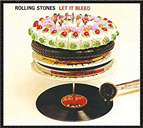 Rolling
Stones
Rolling
Stones
Let It Bleed: 50th Anniversary Limited Deluxe Edition
ABCKO Box Set
Released shortly after the band’s 1969 sold-out American Tour (maybe
you were there), their tenth American album, Let It Bleed, was the American
roots music-inspired follow up to 1968’s cutting-edge Beggar’s
Banquet—recorded when the band was in turmoil as blues maven Brian
Jones, the band’s visionary founder and original leader, had become
increasingly unreliable in the studio due to heavy drug use. For most
Bleed recording sessions Jones was either lost in the ozone or absent
altogether. Jones was also deeply disturbed over the more mainstream,
non-blues oriented direction the band was heading toward and quit on principle
in June, 1968—he only appears on two tracks here (the country blues
“Midnight Rambler” and the under-sung “You Got The Silver,”
that also tellingly featured Keith’s first lead vocal foray) playing
very incidental congas and autoharp. His final recordings—he was
dead less than a month later. The album reached # 1 in the UK and # 3
in the US and while no high-charting singles occurred, quite a few of
the album’s songs soon became staples of the band’s live repertoire
and rock radio station play lists for years to come—notably the
sadly prophetic “Gimme Shelter,” a gospel-infused “You
Can’t Always Get What You Want,” the early c&w-oriented
“Country Honk” and an appropriately brutal recall of Robert
Johnson’s classic “Love In Vain.” Anyway, it’s
all here, and then some, as ABCKO has presciently issued this “50th
Anniversary Limited Deluxe Edition—a Hand Numbered Box Set that
includes an 80 page Hardcover Book with never-before-seen photos (Ethan
Russell) and cogent essay (David Fricke), 2 180 gram LPs (Stereo and Mono),
Restored Original Album Art, Remastered Audio by Bob Lidwig, a 7”
single of “Honky Tonk Women” In Mono With Original Single
Art, 3 Hand Numbered Replica Signed Lithographs Printed On Archival Paper
and an Original Full Color Poster From The 1969 Decca Album Release.”
Nuff said! Long live Brian Jones!!—Gary von Tersch
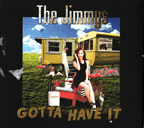 The
Jimmys
The
Jimmys
Gotta Have It
Brown Cow Productions 2019
There is only one Jimmy in The Jimmys! In one of my more manic moments
I considered being litigious and suing the band for false advertising…but
I have relented. This album is just too good to warrant complaints.
Led by vocalist and keyboard artist Jimmy Voegeli, The Jimmys has been
rocking Wisconsin and regions far removed for over a decade, and their
fifth album continues their string of high quality releases. It follows
on the heels of 2015’s “Hot Dish” and 2016’s “Live
from Transylvania,” and provides the same lively and appealing dose
of danceable blues and R&B. The cast of characters remains essentially
stable, with the addition of noted drummer (and album producer) Tony Braunagel.
Voegeli’s fellow keyboard mavens Marcia Ball and Mike Finnigan sit
in as vocal recruits as the band wends its way through a baker’s
dozen tracks, all but two penned by Voegeli or guitarist Perry Weber.
One of the two cover tunes is “Someday Baby,” composed by
fellow Wisconsin denizen, harmonica player Jim Liban. Voegeli provides
nice organ foundation, Peterson lends a brief but pithy saxophone solo
toward the end, but the track, one of the few slow tunes of the set, is
truly distinguished by Weber’s gorgeous guitar lead. In fact, Weber
deserves kudos for his understated but stunning playing throughout.
The general tenor of the album is set from the get-go, with “Ain’t
Seen Nothin’ Yet” an irresistible blues rocker that had me
dancing immediately. The ensuing track, “Grim Reaper,” goosed
by Braunagel’s thumping drums, did nothing to dampen my enthusiasm
despite its title, and it’s succeeded by “Write a Hit,”
a demand presented to the singer by his annoyed lady. On this one Marcia
Ball shares lead vocal, to good effect. “She Gotta Have It,”
the shortest track, is a jaunty outing with horns and a snazzy backing
vocal crew; and then the band emphasizes its versatility with “Started
Up Again,” sounding much like a 1950s Slim Harpo tune. “Hotel
Stebbins” maintains the upbeat groove, affords full exposure to
Voegeli on piano, and has some zany guitar-sax interplay. Voegeli retains
the spotlight on the spoken blues “Drinkin’,” and its
sequel, “When You Got Love.”
The last several tracks alternate between languorous and lively in tempo,
with continued skilled musicianship, and the set closes with the instrumental
“Jose.” The band sounds all along like it’s having a
really good time. While listening to it, so did I.—Steve Daniels
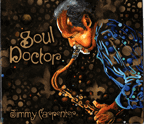 Jimmy
Carpenter
Jimmy
Carpenter
Soul Doctor
Gulf Coast Records 2019
It’s my contention that there is hardly any musical instrument other
than the saxophone that is so versatile; it’s able to convey soul,
sexuality, sadness, and sassy spirit. Perhaps its only competitor is the
“instrument” of the human voice. In his latest release, saxman
Jimmy Carpenter demonstrates his skill with both of those instruments.
A four-time nominee for a Blues Music Award as Horn Player of the Year,
Carpenter has toured to great acclaim with guitarists Jimmy Thackery and
Tinsley Ellis, among others. He has now seemingly established a fruitful
working relationship with stringman Mike Zito, who produced this album
as he did Carpenter’s preceding outing, 2017’s “Plays
the Blues.” Zito plays guitar on one track, and the release appears
on Gulf Coast, a label established in 2018 by Zito and colleague Guy Hale…who
co-wrote two of the songs of this set list. The album’s basic lineup
comprises Jason Langley on bass, Cameron Tyler on percussion, Red Young
on keyboards, and the twin guitars of Trevor Johnson and Chris Tofield.
All are new since the 2017 release, and they seem cohesive and comfortable
together.
Holding nothing in reserve, the set begins with the rocking title tune,
introduced by twin guitars, including that of guest Nick Schnebelen, soon
joined by the rhythm section and Carpenter’s capable tenor vocalizing.
Those unfamiliar with him might wonder why there is no saxophone heard.
The answer is that there is plenty of masterful horn playing to come,
but more than in his previous albums, Carpenter’s singing is front
and center.
Of the ten songs, seven were penned by Carpenter, and they reflect his
talent as songwriter as well as performer. “Wild Streak,”
one of my favorites, is a jaunty shuffle which may refer to his partner,
Carrie Stowers, who is one of several background vocalists on the album
and is cited in Jimmy’s liner notes for her wild streak. “Wanna
Be Right” poses the intriguing question, “Do you wanna be
happy/or do you wanna be right?” (can’t we be both?) and overcomes
some annoying wah-wah guitar with its clever lyrics, nice backing organ
by Young, and a brief but pithy sax solo toward the end. Yet another highlight
is “Wrong Turn,” again lacking sax but bolstered by the lively
harmonica (“Mississippi saxophone”) contribution of Al Ek.
Most of the tracks are uptempo, but especially when the tempo slows, Carpenter
allows himself to blow beautifully on his horn; witness both “When
I Met You” and “Need Your Love So Bad.” There are also
a few tracks, such as “Love It So Much,” fertilely sporting
the addition of The Bender Brass: Doug Wolverton on trumpet and Mark Earley
on baritone sax. The set closes with its longest track, a cover of Eddie
Hinton’s “Yeah Man,” and the group seems to be having
a great time. The end result is a satisfying album of worthy songs, staunch
musicianship, and Carpenter in his prime.—Steve Daniels
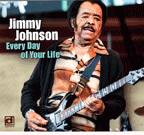 Jimmy
Johnson
Jimmy
Johnson
Every Day of Your Life
Delmark 2019
Is the blues a vitalizing as well as vital art form? Think of the blues
musicians who have lived into their nineties while still able (and enthusiastic)
to perform: Robert Lockwood Jr., David “Honeyboy” Edwards,
Joe Willie “Pinetop” Perkins, Mose Allison (89 when he died),
and Henry Gray, still alive at ninety-five. Add Jimmy Johnson, for many
years now on the A-list of Chicago guitarists.
After having endured a challenging childhood in Mississippi, Johnson left
home for Memphis at age sixteen, and found himself making a living as
a welder in Chicago in the 1940s. He had grown up with future blues legend
Matt “Guitar” Murphy, was fortunate to live next door to Magic
Sam (Maghett) in the Windy City, and practiced diligently to play like
the classic electric guitar players who most affected him.
Johnson didn’t play his first gig until he was almost thirty, but
in the ensuing decades he made up for his late start, playing with many
of the legends who had influenced him: Sam, Otis Rush, the three Kings
- B.B., Albert, and Freddie - Buddy Guy, and Jimmy “Fast Fingers”
Dawkins. For over forty years now he has been releasing his own albums.
As of this writing he is ninety-one years old and playing weekly in his
longtime adopted home of Chicago. Weekly, but not weakly.
Johnson’s first release in ten years finds him in startlingly fine
form. Although comprised of only nine tracks, the set is ample: only one
track clocks in at less than four minutes. Two different ensembles of
skilled Chicago session musicians back him on four tunes each, and the
only brief cut, the closer, “Lead Me On,” features just Johnson
on vocal and piano. Written by Don Robey, it’s a slow plea with
a gospel vibe, ambiguously addressed either to a lover or a deity, and
it’s distinguished by Johnson‘s wavering tenor and his delicate
piano caresses.
Regarding his guitar work, Johnson doesn’t cite Son Seals as an
influence, but his playing in this album is reminiscent of that late Chicago
bluesman. Like Seals, Johnson traffics mainly in single notes rather than
chords; however, unlike his late guitar colleague, Johnson eschews spates
of rapid notes and rather allows time for the silence between notes to
exert its effect. His playing is inventive, and highly lyrical.
Johnson’s birth surname was Thompson, and since five of the songs
sport that composer name, it’s safe to guess that he wrote them…and
they’re all worthy. My favorite of the set, though, is his version
of Fenton Robinson’s “Somebody Loan Me a Dime.” The
song has been covered effectively in a recent release by the new “supergroup”
The Proven Ones, and sublimely in the late 1960s by Boz Scaggs. In Johnson’s
rendition, his vocal lacks the aching poignancy of Scaggs’, but
his lead guitar rendering is mighty fine, and is augmented nicely by Brother
John Kattke on piano. It’s the longest and one of the best tracks
of this sterling set, which indicates that nonagenarian Jimmy Johnson
is far from done purveying solid and soulful blues.—Steve Daniels
 Jimmy
Johnson #2
Jimmy
Johnson #2
Every Day Of Your Life
Delmark CD
Lucky for blues fans everywhere, ninety years young Jimmy Johnson
is back in the recording studio for the first time in over a decade. As
liners author Bill Dahl explains, it has been exactly forty years since
his Delmark debut album, Johnson’s Whacks, as the label celebrates
his homecoming with this enduring project that’s composed of five
original songs along with his uniquely devastating recalls of four other
tunes including a set-closing, deeply moving solo performance of the veteran
singing and playing piano on the Bobby “Blue” Bland hit “Lead
Me On,” a minor-key, personalized rendition of Fenton Robinson’s
classic “Somebody Loan Me A Dime” and a lengthy, moodily transfixing
treatment of Percy Mayfield’s lights-out “Strange Things Happening.”
Among the originals, picks around my house start with the funky title
tune along with the churning “Down In The Valley” and the
better-watch-yourself “Rattlesnake.” Throughout, Johnson’s
passionate, melismatic, tempo-tossed vocals are the perfect foil for his
elastic, slicing guitar licks that suit his wide-open R&B-styled blues
approach like a glove. Johnson has been Chicago-based since 1959 and has
played with Freddie King, Albert King, Magic Sam and Otis Rush and many
others over the decades. Here, accompanied by two stellar Chicago combos,
he performs at a pace that “would tire a musician half his age,”
as Dahl quite accurately puts it.—Gary von Tersch
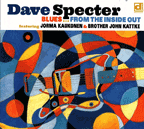 Dave
Specter
Dave
Specter
Blues from the Inside Out
Delmark 2019
How many excellent blues guitarists can survive in one location? Well,
if it’s Chicago, the answer is: a lot! Deservedly among the litany
of current expert axe-slingers in the Windy City - Buddy Guy, John Primer,
Lil’ Ed Williams, Nick Moss; the list goes on - is Dave Specter.
A native of the Chicago area, Specter collaborated with a slew of legends
such as Primer, Son Seals, Junior Wells, Robert Lockwood Jr., Ronnie Earl,
and Otis Rush before forming his own band just over three decades ago.
His new album, “Blues from the Inside Out,” finds Specter
for the first time deploying his vocal as well as guitar talent, and diversifying
into some funk and swampy Louisiana territories. Present on the entire
set, lasting just over a satisfying full hour, are Marty Binder on drums
and Harlan Lee Terson on bass. Several tracks sport a lively horn section,
and four of the tunes benefit from the keyboard artistry of Brother John
Kattke. Jorma Kaukonen, of Jefferson Airplane and Hot Tuna fame, sits
in on two numbers, one of which he co-wrote with Specter, who wrote or
co-wrote all twelve songs.
Holding nothing back, the set commences with the title tune, a swinging
shuffle with Specter making one of his three vocal appearances and driving
the tune with crunchy chords. Next the horns are brought into play on
“Ponchatoula Way,” Kattke handling the vocal and providing
some really sweet mid-song interplay on piano with Specter’s guitar.
Kattke sings again on “March Through the Darkness,” an inspirational
tune with not-too-subtle reference to our current milieu of political
strife. Background vocals are provided adeptly by Tad Robinson and Devin
Thompson in one of their several appearances.
“Sanctifunkious” is the first instrumental of the set, in
which the rhythm section distinguishes itself, Kattke on organ this time
and Specter delivering a sinuous guitar line. Then, doubling down on the
theme of “March Through…,” Specter addresses our current
national chief executive directly with “How Low Can One Man Go?”
Without mentioning said person’s name, Specter skewers him with
witty and scathing lyrics, interspersed with a scorching lead guitar solo
(by either Specter or Kaukonen). The song places Specter in the company
of such other contemporary bluesmen as Rick Estrin, Doug MacLeod, Watermelon
Slim, and James Harman who fearlessly deal with topical issues.
Kaukonen’s other contribution is on the song “The Blues Ain’t
Nothin’,” a counter-intuitive title and track similar in instrumentation
and tempo to “How Low….” It follows another instrumental,
“Minor Shout,” an over seven minute outing with a jazzy vibe
and with Specter in a Carlos Santana-type guitar groove. Next comes “Opposites
Attract,” with another clever set of lyrics and a Louisiana-Latino
vibe, enhanced by Ruben Alvarez on percussion.
There are two more instrumentals to savor: “Soul Drop,” another
foray into mid-tempo funk, and the long closer “String Chillin’,”
measured and pensive, with Specter in sublime Ronnie Earl-mode. Sandwiched
between the two is “Wave’s Gonna Come,” featuring the
sole vocal by chanteuse Sarah Marie Young. These last three tracks moderate
the set’s prior zippier tempo and afford full exposure of Specter’s
impressive guitar prowess.—Steve Daniels
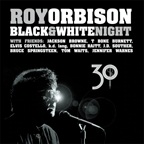 Roy
Orbison
Roy
Orbison
Black & White Night 30
Sony/Legacy 2LP vinyl
This is a commemorative 2 LP project celebrating the 30th anniversary
of Roy Orbison’s RENOWNED television comeback concert at the Ambassador
Hotel’s Cocoanut Grove night club in Los Angeles. By the mid-1980s
Orbison had pretty much slipped out of favor but the inclusion of his
song “In Dreams,” featured in David Lynch’s 1986 film
noir masterpiece, Blue Velvet, helped reignite interest in the ‘Big
O. In short order, on September 30th, 1987, Orbison, then 51, staged a
REMARKABLE COMEBACK with the assistance of a host of guest musicians that
he had influenced on the majority of the tracks, including Jackson Browne,
T-Bone Burnett, Elvis Costello (who joins Roy on a moody cover of Elvis’
“The Comedians”), k.d. lang, Bonnie Raitt, Bruce Springsteen
and Tom Waits among others, and Elvis Presley’s TCB Band—comprised
of Glen D. Hardin, James Burton. Jerry Scheff and drummer Ron Tutt on
others as they blast through such ‘Big O’ hits such as “Only
The Lonely,” the fore-mentioned “In Dreams” and “Crying.”
Also included are three previously unissued tracks—the song for
his wife “Claudette,” the selfless “Blue Angel”
and a driving, alternative version of Roy’s smash “Oh, Pretty
Woman.” Housed in a gatefold jacket, B&W 30 also comes with
a download card for all 19 tracks. A small miracle of sorts!—Gary
von Tersc
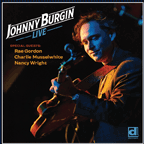 Johnny
Burgin
Johnny
Burgin
Johnny Burgin Live
Delmark
Rockin’ Johnny Burgin grew up in the South, in Mississippi and South
Carolina, but made a name for himself in the Chicago blues scene of the
1990’s. After learning his authentic blues style with the seasoned
members of the Ice Cream Men, Johnny went on to tour the Midwest with
legendary pianist Pinetop Perkins and then spent two years on the road
with Howlin’ Wolf/Paul Buttterfield drummer Sam Lay. Johnny Burgin
Live is his ninth release. His tribute to Howlin’ Wolf, Howlin’
at Greaseland, was nominated for a BMA for Best Traditional Blues Recording
in 2017.
Live was recorded over one magical evening at the Redwood Café
in Cotati, California by Kid Anderson (who plays guitar and piano throughout)
and Robby Yamilov. The album really kicks in on the 2nd track, “Can’t
Make It Blues,” when Burgin goes into one of his patented wild solos.
A master of controlled chaos, Burgin has the great ability and chops to
take it to the edge and bring it right back home. Vocally, he slightly
reminds one of Junior Parker and Magic Slim, but mostly has a smooth original
style. Rae Gordon trades verses with Johnny on “I Got to Find Me
a Woman,” and takes the lead on three other songs, shining especially
on “You Took the Bait.” The unmistakable sound of the legendary
Charlie Musselwhite ups the ante on the back end of the album, where his
peerless harp graces the tracks “Blues Falling,” “California
Blues” and “When the Bluesman Comes to Town.” A highlight
is the instrumental “Louisiana Walk,” where Rockin’
Johnny really showcases his mastery of the electric guitar. Tenor saxophonist
Nancy Wright plays a mostly complimentary role on the five tracks she
appears on but takes no prisoners when she steps out on “You Took
the Bait” and the closing instrumental “Jody’s Jazz.”
Johnny Burgin Live is an excellent snapshot of an evening spent with Rockin’
Johnny and his band and a great inducement to catch these folks in person
next time they come around, which is often, according to their 200+ date
schedule. — Bob Monteleone
 Nicholas
David
Nicholas
David
Yesterday’s Gone
Wild Heart Records
Nicholas David is a pianist/singer/songwriter based in St. Paul, Minnesota.
In 2012 he took 3rd place on NBC’s The Voice, bringing his “coach”
Cee Lo Green to tears during his soulful rendition of “You Are So
Beautiful”. He’s been releasing albums and EP’s since
2004 and spent 2018-19 touring as part of the Devon Allman Project. Yesterday’s
Gone was recorded in New Orleans featuring some top Crescent City talent
and was produced by Samantha Fish. The rhythm section includes Fish’s
drummer Scott Graves and notable bassist Charlie Wooton, along with David’s
prodigious skills on keyboards. Guitarists Jonathon Long and Duane Betts
(son of founding Allman Brothers guitarist Dickey) round out the impressive
group. The eleven tracks, all composed by David, are mostly piano-driven,
and are an excellent vehicle for David’s soulful vocals. Some songs,
like “Curious” or “Let U Go” might be compared
to Bruce Hornsby’s early work, but are much grittier. R. Scott adds
some nice percussion flourishes (and backing vocals) on a few tracks,
especially on “Okay.” “Times Turning” is a highlight:
the only song on the album performed in the basic piano/bass/drums trio
format, instrumentally reminding one of the Ben Folds Five. Overall, the
musicians play in deference to the almighty song, no superfluous soloing
here. Yesterday’s Gone is a solid listen top to bottom in the singer/songwriter
vein, soaked with a Southern feel and should deservedly garner much attention
on the roots music scene.—Bob Monteleone
 Mike
Zito & Friends
Mike
Zito & Friends
Rock’n’Roll: A Tribute to Chuck Berry
Ruf Records
Rockin’ bluesman extraordinaire Mike Zito is no stranger to these
pages as a longtime guitar slinger, producer and co-founder of Gulf Coast
Records. Born and raised in Chuck Berry’s hometown of St. Louis,
this project is obviously a labor of love for Zito. Comprised of twenty
Chuck Berry classics featuring twenty different artists, the album literally
leaps out the speakers. Backed by Zito on guitar and vocals, Lewis Stephens
on keyboards and the rhythm section of Terry Day and Matthew Johnson (bass
and drums), each artist shines individually throughout.
A who’s who list of current roots rock artists and prominent guitarists
like Robben Ford, Joe Bonamassa, Sonny Landreth, Luther Dickinson, Tommy
Castro, Walter Trout, Jimmy Vivino, Joanna Connor and more grace this
excellent collection. Highlights are too numerous to name in this space
but I’ll try. Slide legend Sonny Landreth is always a pleasure to
hear and his performance on “Havana Moon” is no exception.
Joe Bonamassa “brings it” as he usually does and completely
torches “Wee Wee Hours.” Alex Skolnick (formerly of thrash
metal band Testament) and Richard Fortus (of Guns & Roses) stand out
with their modern approaches as they blaze through “Down Bound Train”
and “Maybellene” respectively. Joanna Connor duets with Zito
and throws down some real nice slide work on an excellent version of “Rock
and Roll Music.”
All twenty artists (and of course Zito and company) absolutely rise to
the occasion on this tribute. And the paintings by Rip Kastaris of Mike
Zito and Mr. Berry superimposed in front of the St. Louis skyline and
Gateway Arch throughout the packaging is breathtaking! This CD is such
a blast I don’t think it will leave my car stereo for a while! —
Bob Monteleone
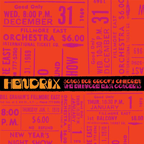 Jimi
Hendrix
Jimi
Hendrix
Songs For Groovy Children/ The Fillmore East Concerts
Experience/ Legacy
This revelatory project collects all four historic, genre-defying concerts
at the Fillmore East on New Years Eve 1969 and New Years Day 1970 by the
guitar avatar Jimi Hendrix and his short-lived Band of Gypsys band (Electric
Flag drummer Buddy Miles and Jimi’s Air Force buddy Billy Cox) in
their original performance sequence. Both the 5 CD and 8 LP sets boast,
among their 43 incendiary tracks, over two dozen songs that have either
never before been commercially released or have been newly pressed and
remixed. Measured alongside his triumphs at Monterey Pop and Woodstock,
Hendrix’s Fillmore East concerts illustrated a critical turning
point in a burgeoning career filled with indefinite possibilities as the
promising development of new material such as “Power Of Soul,”
“Changes,” “Earth Blues,” “Stepping Stone”
and the utterly devastating “Machine Gun” attests. True to
his unpredictable, fertile musical imagination, Hendrix opened the four-show
stint with an eleven song set that did not feature a single song he had
yet commercially released—exciting new songs such as “Izabella,”
“Ezy Ryder” and “Burning Desire” obviously thrilled
the sold-out house. He would pepper the remaining three shows with SUPERCHARGED
reworkings of favorites such as “Stone Free,” “Purple
Haze,” “Foxey Lady,” “Wild Thing,” “Hey
Joe” and “Voodoo Child (Slight Return)“ to similar acclaim.
By the close of January, the band had broken up but Hendrix’s blend
of funk, rock and soul pioneered by the trio became history, making a
profound impact on popular music in its wake. An accompanying 40-page
booklet is packed with a bevy of rare, heretofore unseen photos and informative
essays. ‘Nuff said.—Gary von Tersch
 Various
Artists
Various
Artists
Rhythm ‘N’ Bluesin’ By The Bayou
Ace CDCHD 1547
Volume 21 of this long-running “By The Bayou” series proffers
yet another large helping of mid-century rhythm ‘n’ blues
from the bayou region of South Louisiana and South East Texas—an
area that spreads from New Orleans in the east to Port Arthur in the west.
Featuring plenty of hot guitars, pounding pianos, loudly honking saxes
and waycool vocals occasionally spiced up with some tasty harmonica or
accordion, this “play it loud” compilation features 28 authentic
R&B stompers with many new to CD, including 11 previously unreleased
titles. All a thoroughly engaging aural testimony to the most innovative
record men of the area—Eddie Shuler (Lake Charles), J,D. Miller
(Crowley), Floyd Soileau (Ville Platte), Sam Montel (Baton Rouge) and
Huey Meaux (Port Arthur) who all had “big ears” as far as
recognizing musical talent and letting it flourish—always encouraging
and cajoling the best possible performances from their artists without
sacrificing their individuality. Personal picks would begin with the following
four—“Bop Cat Stomp” by King Charles and his Orchestra
(with the enigmatic Left Hand Charlie on guitar), great back-to-back numbers
by both Clifton Chenier (“It Happened So Fast”) and his, uncle
Morris “Big” Chenier, with the assertive “Stand By My
Side” (reputedly his music was not as important as his ownership
of the popular nitery Chenier’s Barbeque and Smoke House), a pair
of great feared- lost Cookie and the Cupcakes tracks (“Crazy Rock”
and “Rocks On My Pillow”) and a raucous slice of R&B titled
“Whoa Mule” by Leroy James and his Combo. Non-stop numbing
stuff!—Gary von Tersch
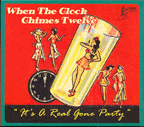
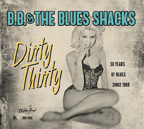
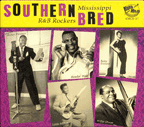
Various Artists
When The Clock Strikes Twelve
Atomicat CD
B.B. & The Blues Shacks
Dirty Thirty
Rhythm Bomb CD
Various Artists
Southern Bred Volume 4: Mississippi R&B Rockers
Koko Mojo CD
Three more dynamite releases from a variety of Koko Mojo-affiliated enterprises
(thanks, you devil doll Janice), probably the most visionary rock ‘n’
roll/rhythm ‘n’ blues outlet around these days. The stylistically
varied dance-oriented When The Clock Strikes Twelve, accurately sub-titled
‘It’s A Real Gone Party’ (check out that Vespa straddling
fanny on the back cover!), showcases a 28 tune boatload of rump-shaking/slow
grinding numbers—from, naturally, Sam Cooke’s “Lets
Have A Party “ and a Dean Martin/Nat “King” Cole
hook-up on the insightful “Open Up The Doghouse (Two Cats Are Comin’
In)“ to a hip-shaking, dirty dancing re-shuffling of the Rivingtons’
classic “Papa-Oom-Mow-Mow” and the rockabilly/rowdy floor-filler
“When My Baby Passes By” by the locally legendary Glenn Bland
and the Rhythm Kings. Other great dancers feature the likes of Paul Rich
(“Rock-A-Hula Baby”), believe-it-or-not Stan Kenton (a nifty
“Tequila”), saxophonist Big Jay McNeely (“Strip Tease
Swing”) and drummer Sandy Nelson with his foot-shaking version of
“La Bamba Bossa Nova.” Party on!
I don’t know how much this import three CD set, by B.B. &
The Blues Shacks costs, but it’s worth it. The BB’s—brothers
Michael “Maddy” (vocals, harp) and guitarist Andreas Arit
, along with good buddies keyboardist Fabian Fritz, upright and electric
bassist Henning Hauerken and Germany’s best blues drummer Andre
Werkmeister deliver the goods on nearly fifty hand-made R&B brother
originals—the only covers are in-the-vein reworkings of Johnny Guitar
Watson’s “Raise Your Voice,” John Brim’s “It
Was A Dream” and the early country rocker “Deep In The Heart
Of Texas.” Otherwise, as perceptive liners author R. J. Mischo puts
it: “From the organ shuffle-based opener “Death Tax”
to the closer “Hear My Baby Naggin,” Dirty Thirty travels
the back roads of the Golden Age of American R&B, paying homage to
Chicago, New Orleans, Memphis and West Coast blues traditions.”
Things must have really been rockin’ last June 17-19th at Horweck
Studio, Hammenhauser Str. 35 C, 27777 Ganderkesee, Bookholzberg, Germany!
Volume four of Koko Mojo’s nicely curated Southern Bred series follows
in the footsteps of the earlier SB releases as the jump blues feeling
of the music, whether country or city is, throughout, vibrantly engaging
with several musicians having more than one selection. Arthur Crudup delivers
two amped-up numbers (the leadoff “Hey Mama, Everything’s
All Right” and “Who’s Been Foolin’ You”)
while Chicago blues pioneer Big Bill Broonzy shines on four sides (with
his Fat Four on “You’ve Been Mistreating Me,” with his
Big Little Orchestra on “Tomorrow” and with his guitar on
both “Little City Woman” and “Jacqueline”) and
Otis Rush has three titles—a deliberative “It Takes Time,”
the celebratory “My Baby’s A Good’un” and the
backyard philosophical “Sit Down Baby.” Likewise, Howlin’
Wolf unleashes his manic magic on three numbers (“Down in The Bottom,”
“Wang-Dang-Doodle” and “You’ll Be Mine”)
alongside a pair by Sunnyland Slim (“It’s You Baby”
and “Highway 61”) and another pair by the enterprising Doctor
Ross—“Shake-A- My Hand” and, with his Jump & Jive
Boys, “Doctor Ross Boogie.” Other featured artists include
Little Milton, Rufus Thomas, Magic Sam, Betty Everett, Elmore James, Willie
Dixon and, on the distaff side, Betty Everett with “My Love.”
Nary a dud in sight!-Gary von Tersch
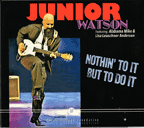 Junior
Watson
Junior
Watson
Nothin’ To It But To Do It
Little Village Foundation
A fixture on the West Coast blues scene, guitarist/singer Junior Watson
has over 50 recording session credits to his name. He was a founding member
of The Mighty Flyers and part of the venerable group Canned Heat for most
of the 1990s. A short list of the many folks he’s performed or recorded
with includes Big Mama Thornton, Charlie Musselwhite and Kim Wilson.
The fifteen track Nothin’ To It But To Do It was produced by Junior
Watson and Kid Anderson and not only features Junior’s greasy jazz-tinged
blues licks throughout, but showcases a couple of fine guest vocalists.
Lisa Leuschner Anderson sings five of the songs and Alabama Mike lets
loose on a couple, especially “A Shot in the Dark.” The swingin’
instrumental “Up and Out” starts things off with Watson and
sax man “Sax” Gordon sharing the melody or “head”
as jazz folks like to refer to. A sax and organ solo is followed by a
nice turn by Watson. It’s the perfect warm up, you can imagine the
band opening their set at some dark club with this number, stretching
their muscles before the heavy lifting comes in. “Ska-Ra-Van”
is a playful ska version of Duke Ellington’s jazz standard “Caravan.”
“Summer Love” has a bossa nova feel and follows a long line
of fine Watson-penned instrumentals that are always a pleasure to hear.
“Well, You Know” features some fat harmonica sounds from Gary
Smith and the underrated vocals of Junior. “I Found You” is
a slowed-down version of James Brown’s “I Got You (I Feel
Good)” featuring a sassy vocal turn by Anderson. Watson really tears
it up on the closer “You’re Gonna Need Me Before I Need You.”
The rhythm section of bassist Kedar Roy and drummer Andrew Guterman is
solid and this whole record feels like it could have been plucked off
my grandfather’s turntable in 1959. Jim Pugh shines on piano and
organ. His refreshing organ sound is quite different from the standard
B3 Hammond we typically hear. It’s not a Farfisa, maybe an old Univox?
Nothin’ To It But To Do It is another great Junior Watson album,
his unique ability to fuse traditional blues tones with jazz chordal touches
leave him with few peers in the music world and he owns every note he
plays. It’s been a while (7 years) since his last solo release,
let’s hope the wait isn’t as long for the next one. –
Bob Monteleone
Book
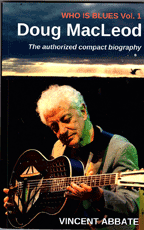 Who
Is Blues Vol. 1:
Who
Is Blues Vol. 1:
Doug MacLeod
By Vincent Abbate 2018
Those who have been fortunate to see award-winning acoustic bluesman Doug
MacLeod perform live invariably leave feeling good, and much better than
when they arrived. That result is not only due to MacLeod’s undeniable
and jaw-dropping musical virtuosity, but also to the intelligence, humor,
and humanity that he exudes. Veteran music journalist Vincent Abbate has
successfully captured the essence of MacLeod in this brief but revealing
biography.
Divided into somewhat randomly arranged chapters, the book nonetheless
achieves its goal of revealing Doug’s development as a blues performer
as well as an empathetic and perceptive individual who has learned from
painful life experiences. Two chapters, as well as substantial parts of
the remainder, are devoted to MacLeod’s direct quotes and reminiscences.
We learn about his trying early years, involving a father who never came
to appreciate Doug’s love of the blues or attained mastery of his
chosen field. We learn of his stutter, overcome by his love of singing;
and of his sexual abuse as a child by two trusted adults. We learn of
his wild early adult years, especially his time spent while in the Navy
stationed in Norfolk, Virginia.
It was there in Virginia that MacLeod met one of the two major influences
in his life, Ernest Banks, “small and wide, with chocolate skin,
a head like a bowling ball and one eye. …I’m not sure who
he really was. But I’m sure he could play.” Banks taught MacLeod
the musical philosophy that, with rare youthful exceptions, Doug has never
wavered from: “1, Never play a note you don’t believe, and
2, Never write or sing about what you don’t know about.” In
the three-plus decades since MacLeod has segued from electric bassist
and guitarist to his shining career as solo bluesman, his canon of creative,
original, and often ribald songs attests to his adherence to that philosophy.
The humor in his songs may be attributable to his fond relationship with
the other main mentor in his life, the late George “Harmonica”
Smith, who became Doug’s “second father” and also contributed
to another salient aspect of MacLeod’s worldview: “The blues
is a music of overcoming adversity, not subjecting to adversity.”
A highlight of the book is MacLeod’s recounting of his experiences
with Smith. Since his death in 1983, Smith’s deathbed promise that
“Dubb [his moniker for Doug], I will say goodbye to you” has
been followed by MacLeod’s repeated, mysterious, and poignant encounters
with seagulls during his musical travels.
There is a lot more in this short book. Some of MacLeod’s primary
musical influences are revealed: blues singer-songwriters Tampa Red, Big
Bill Broonzy, and Blind Willie McTell, and jazz guitarist Kenny Burrell.
We learn of MacLeod’s collaborations and connections with Pee Wee
Crayton, John “Juke” Logan, Brownie McGhee, and Shakey Jake
Harris, and a host of other notable bluesmen and -women; of a few fraught
amorous adventures before his marriage over forty years ago to Patti Joy;
of the stress induced by the serious illness of his only son, musician
Jesse; of his critique of “bloozemen” who play too many notes
and evince no familiarity with the origins of the blues. Although nothing
compares to seeing Doug MacLeod perform live or listening to his copious
recordings, the book certainly reveals him in his complexity and humanity.—Steve
Daniels
Film
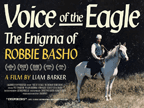 Voice
Of The Eagle
Voice
Of The Eagle
The Enigma Of Robbie Basho/
A Film By Liam Barker
MVD Visual
This is an inspiring feature-length documentary on the extraordinary life
and visionary music of the American guitarist, singer and mystic Robbie
Basho. Before his bizarre death at the hands of a chiropractor, Basho
was positive that his compositions would not outlast him. Orphaned early
on, diagnosed with synaesthesia—a conjunction of the senses that
caused him to interpret sound as color—and claiming to be the reincarnation
of a 17th century poet-, the Baltimore-born, Berkeley-raised primitive
guitarist and singer’s musical output was equally as outlandish
as his persona. In his brief and troubled life he laid the foundation
for radical changes to the musical landscape of America during the 1960s
and 1970s but reaped little more than a meager, if devoted, following
during his lifetime. Voice Of The Eagle is a journey into the heart of
an artist’s lifelong struggle that is designed to illuminate and
satiate existing fans while serving as an ideal starting point for the
uninitiated. Featuring interviews with Basho’s former students,
contemporaries and a few close friends—including Henry Kaiser, Pete
Townshend, William Ackerman and fellow Berkeleyan Country Joe McDonald—the
film integrates new information and anecdotes on Basho with previously
uncovered archive material and photography of the landscapes and natural
phenomena that informed his work. Extras include extended and deleted
interviews (410 minutes), trailer and a 24-page booklet. A long overdue
look at a musical genius.—Gary von Tersch
Home
/ Blues Blogs /
Artist Links / Blues
Links / Videos / Store
Subscribe / Advertise
/ Back Issues
/ Contact / Staff